Migraine Travel Hydration Calculator
Proper hydration is critical for preventing migraine attacks while traveling. This tool calculates your personalized daily water needs based on your specific travel conditions.
When planning a getaway, most people think about packing sunscreen, itineraries, and camera gear. Migraine is a neurological disorder that causes recurrent, throbbing head pain, often paired with nausea, light sensitivity, and visual disturbances. If you’ve ever experienced a migraine attack while on a plane, in a hotel, or exploring a new city, you know how quickly a dream vacation can turn into a nightmare. This guide walks you through every step-pre‑trip preparation, daily habits, medication strategies, and emergency actions-so you can enjoy your travel without the fear of a sudden headache.
Why Migraine Loves Travel
Travel creates a perfect storm of common migraine triggers. Changes in time zones disrupt your circadian rhythm, while unfamiliar diets alter caffeine and sugar intake. Crowded airports, bright screens, and loud announcements increase sensory overload. Even the excitement of a new environment can raise stress hormones, which many migraine sufferers find irritating. Recognizing these patterns helps you stay one step ahead.
- Sleep disruption: Jet lag or late‑night tours can cut sleep by several hours.
- Dehydration: Cabin air is dry, and tourists often forget to drink enough water.
- Altitude: Higher elevations reduce oxygen, a known migraine trigger.
- Dietary changes: New foods may contain MSG, aged cheeses, or excess tyramine.
Pre‑Trip Planning: Build a Migraine‑Proof Itinerary
Start your preparation at least two weeks before departure. Create a checklist that covers medical, logistical, and lifestyle aspects.
- Travel insurance that covers emergency neurology visits.
- Schedule a brief appointment with your neurologist to review your preventive regimen.
- Ask your doctor for a letter stating your diagnosis and prescribed medications-useful at customs.
- Research the local time zone and plan a gradual shift in sleep schedule (15‑30 minutes earlier each night).
- Identify pharmacies at your destination that carry your acute meds (triptans, anti‑emetics).
Using a digital calendar, block out "sleep windows" and "hydration reminders" so you won't overlook them while snapping photos.
Packing the Right Relief Kit
A well‑stocked kit is your safety net. Include both prescription and over‑the‑counter items, plus a few non‑medicinal helpers.
- Triptan tablets or nasal spray (sumatriptan 50mg is a common choice).
- Anti‑nausea medication such as metoclopramide or ondansetron.
- Cold pack or reusable gel pack-cool compression can soothe throbbing pain.
- Prescription sunglasses with FL‑41 tint to reduce light sensitivity.
- Electrolyte powders (e.g., magnesium‑rich formulas) to mix with water.
- Travel‑size earplugs and a noise‑cancelling headphone set for noisy cabins.
Store everything in a clear zip‑lock bag; this prevents spills and makes TSA screening smoother.
Day‑to‑Day Strategies: Stay Hydrated, Rested, and Stress‑Free
Once you’re on the road, the small habits you keep daily make the biggest difference.
- Drink at least 2L of water per day. Set a reminder on your phone every 60minutes.
- Limit caffeine to one cup in the morning; avoid coffee in the afternoon to prevent sleep disruption.
- Carry a Hydration bottle with built‑in time markers.
- Prioritize Sleep hygiene: blackout mask, earplugs, and a consistent bedtime.
- Take brief, 5‑minute stretching breaks every two hours of sitting (especially on long drives).
Stress‑reduction techniques such as breathing exercises (4‑7‑8 method) or a short mindfulness app session can lower cortisol levels, which many migraine sufferers find helpful.
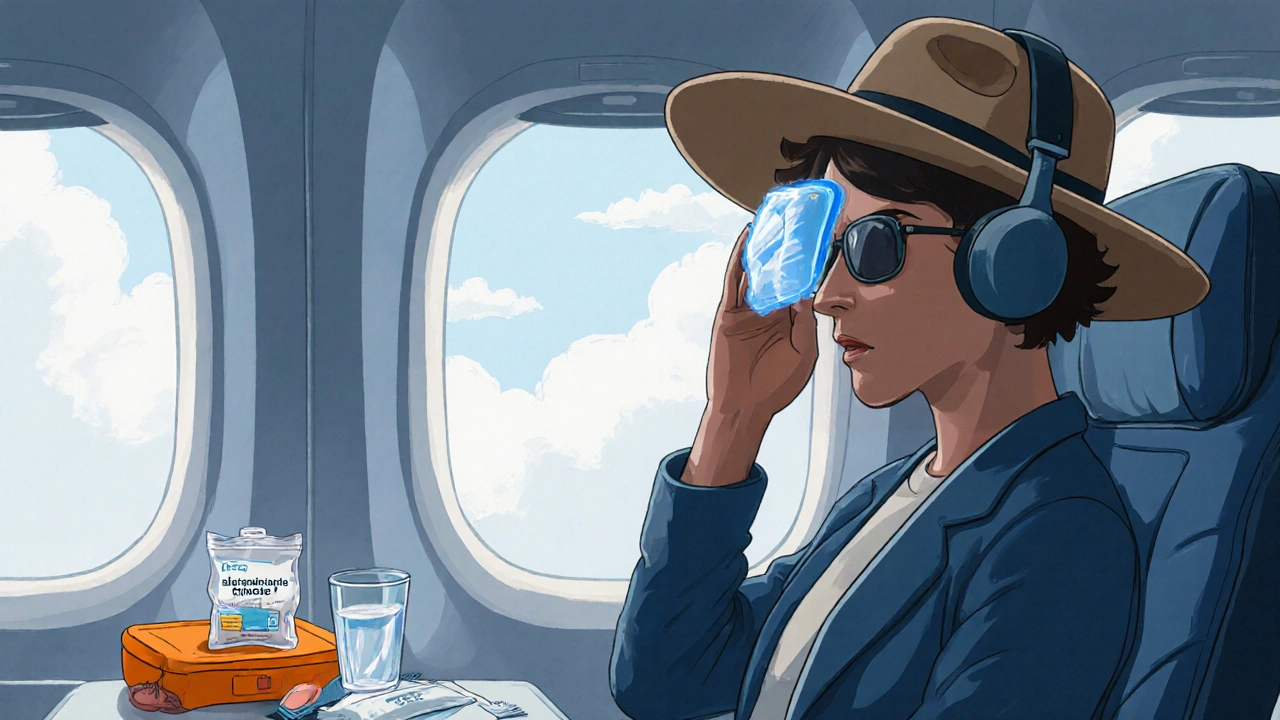
Managing an Attack on the Road
If a migraine does strike, act fast. The earlier you treat, the shorter the episode.
- Find a quiet, dimly lit spot-hotel rooms, airport lounges, or an outdoor shaded area.
- Take your prescribed Triptan as soon as you feel the aura or the first pain.
- Apply a cold pack to the forehead or neck for 15minutes.
- Sip an electrolyte solution with magnesium (400mg) and potassium.
- If nausea is severe, use the anti‑emetic and keep a ginger chews packet handy.
Document the attack in a small notebook: time, duration, suspected trigger, medication taken, and relief level. This log helps your doctor fine‑tune treatment after you return home.
Medication Tips for Different Travel Modes
Various travel environments pose unique challenges for medication storage and timing.
| Mode | Storage Tips | Timing Advice |
|---|---|---|
| Airplane | Keep meds in a clear carry‑on bag; avoid extreme heat in overhead bins. | Take acute meds before take‑off if you anticipate a trigger (e.g., cabin pressure changes). |
| Car Trip | Use a cooler bag with a small ice pack to maintain stable temperature. | Set a timer to remind you to take preventive meds every 12hours. |
| Train/Bus | Store meds in a zip‑lock pouch in your personal bag. | Take a small dose of caffeine (e.g., 50mg coffee) only if it’s part of your routine. |
| Boat/Ship | d>Secure meds in a waterproof container; motion can affect absorption.Combine anti‑motion sickness tablets with your triptan if you’re prone to seasickness. |
Special Situations: Altitude, Jet Lag, and Sunlight
High elevations, time‑zone jumps, and bright outdoor settings each demand a tweak to your plan.
- Altitude: Ascend gradually when possible. If you’re heading to mountain resorts, start a low‑dose acetazolamide (prescribed by a doctor) to prevent altitude‑related headaches.
- Jet lag: Align your sleep schedule to the destination 3 days prior. Light exposure in the morning helps reset circadian rhythm; wear sunglasses in the evening.
- Sunlight: UV exposure can trigger migraines for some people. Wear a wide‑brim hat and the FL‑41 sunglasses mentioned earlier.
When traveling to tropical destinations, stay cool. Overheating can dilate blood vessels, intensifying pain.
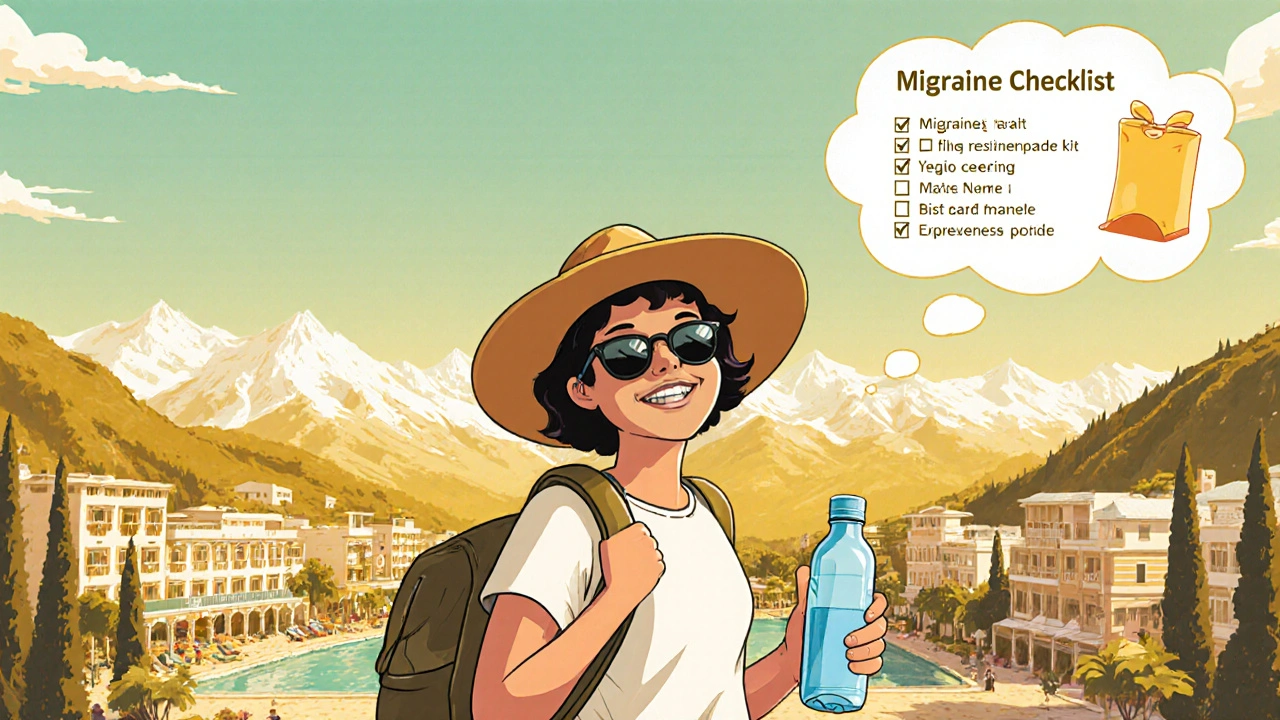
Quick‑Check Checklist for Travelers
| Task | Done? |
|---|---|
| Doctor visit & medication review | ☐ |
| Printed prescription & diagnosis letter | ☐ |
| Travel insurance covering neurology | ☐ |
| Pack migraine kit (triptan, anti‑emetic, cold pack, etc.) | ☐ |
| Hydration bottle with markers | ☐ |
| Sun protection (hat, FL‑41 sunglasses) | ☐ |
| Sleep plan for time‑zone shift | ☐ |
| Local pharmacy contacts | ☐ |
Tick each box before you board. A little preparation goes a long way toward a migraine‑free adventure.
Final Thoughts
Travel doesn’t have to be a migraine trigger. By knowing which factors are most likely to set off an attack and by equipping yourself with a solid prevention plan, you can focus on the sights, flavors, and experiences that made you want to travel in the first place. Remember, the key is consistency-hydration, sleep, and early medication are your triple‑guard against headaches.
Frequently Asked Questions
Can I take migraine medication on a plane?
Yes. Keep it in your carry‑on, in the original prescription bottle if possible. TSA allows common acute migraine meds, but it helps to have a doctor’s note if you’re carrying larger quantities.
What foods should I avoid while traveling?
Steer clear of aged cheeses, processed meats, chocolate, and anything with MSG. If you’re unsure, ask the chef about hidden ingredients or choose simple grilled options.
Is caffeine good or bad for migraine travelers?
A small amount in the morning can help you stay alert, but excess caffeine later in the day can disrupt sleep and trigger attacks. Keep it under 100mg after 2PM.
How do I handle a migraine during a long flight?
Ask flight attendants for a seat with a window blind, use noise‑cancelling headphones, and take your triptan as soon as symptoms start. A cold compress can be improvised with a damp towel kept in the seat pocket.
Do I need extra medication for altitude trips?
Talk to your neurologist about a short‑term preventive like acetazolamide if you’ll be above 2,500m. Some people find that a higher dose of their usual triptan works better at altitude.
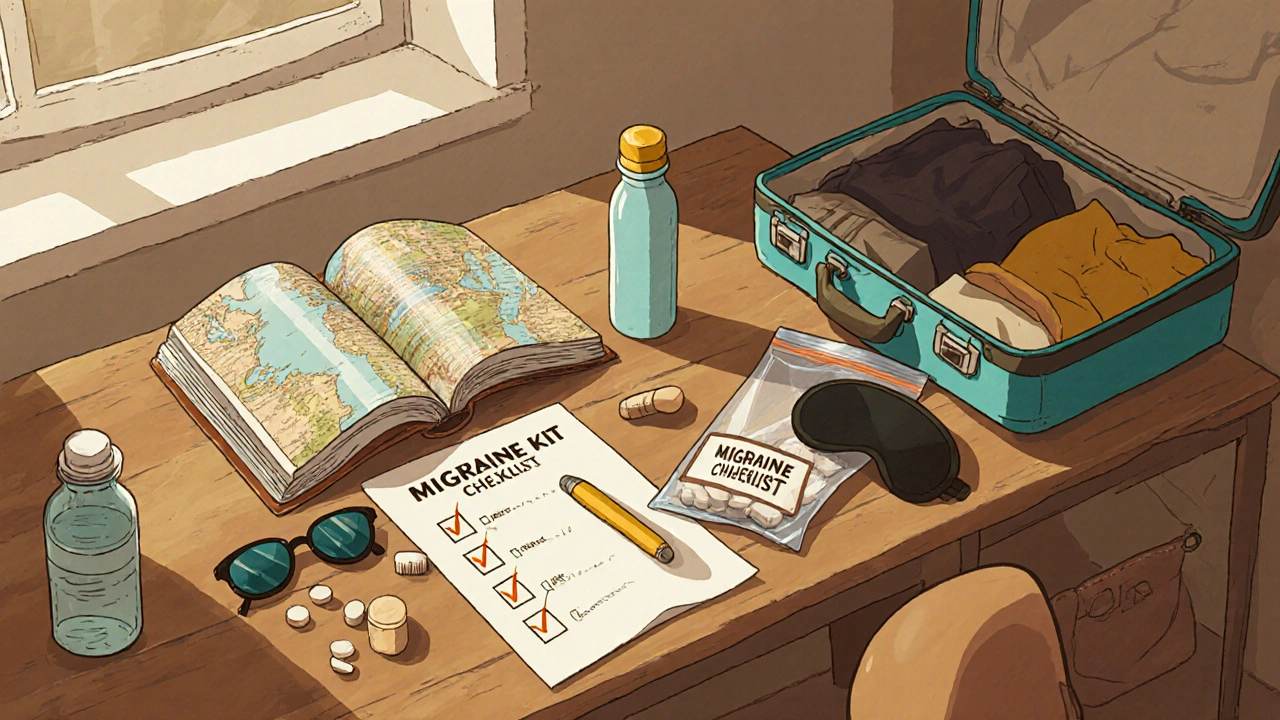
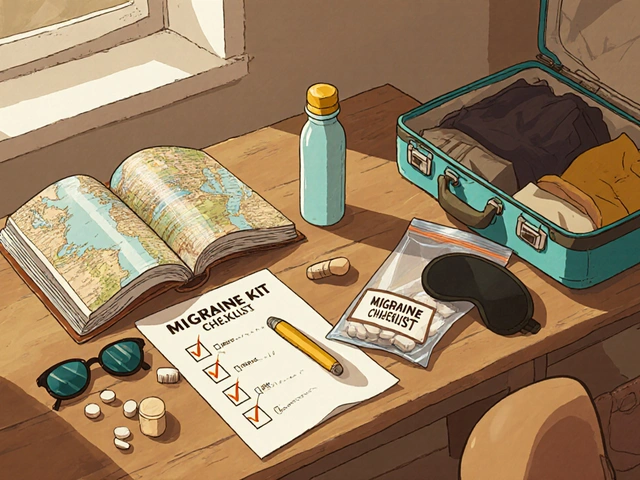

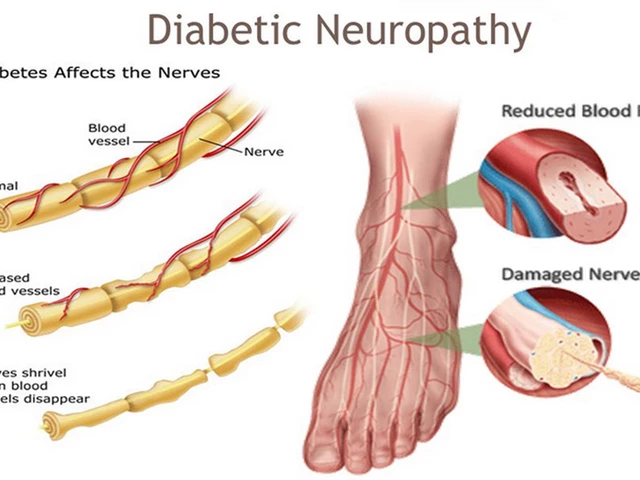
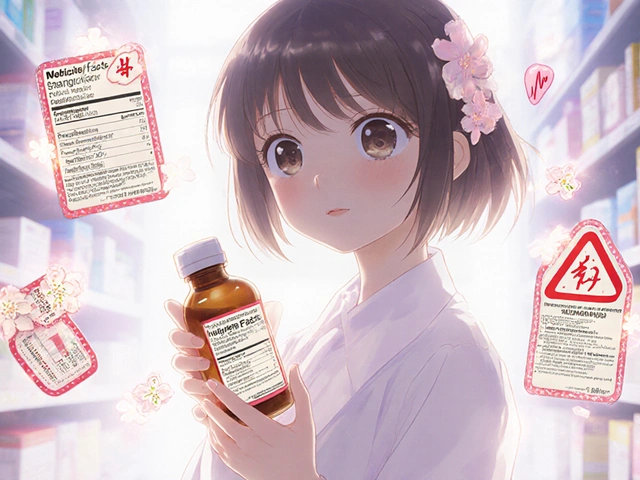
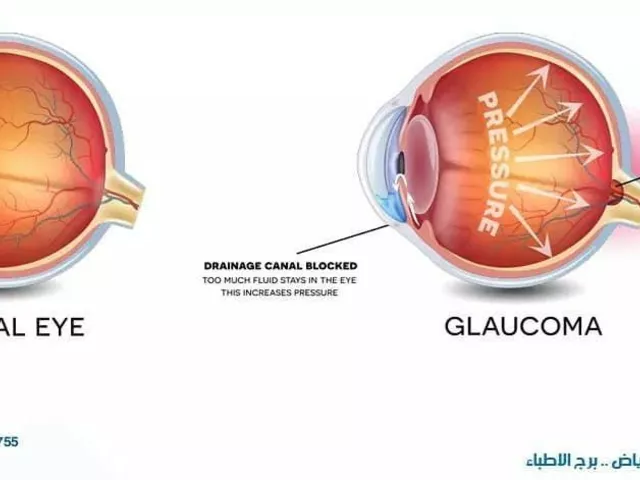
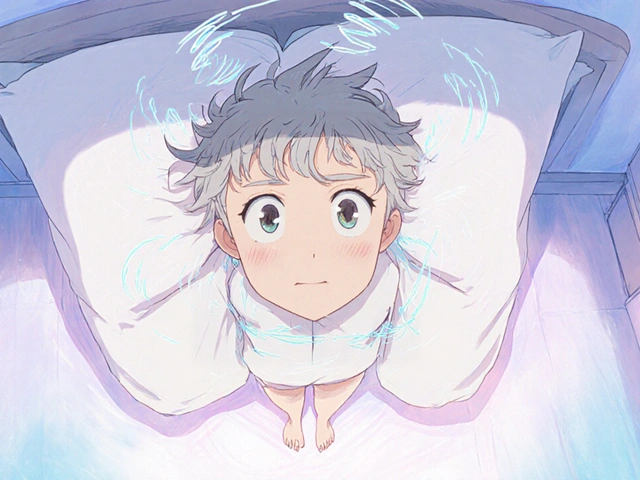

Russell Abelido October 16, 2025
I remember the first time a migraine hit me mid‑flight and the world turned into a blur of fluorescent lights and roaring engines. The panic that creeps in feels like a tidal wave crashing over a fragile boat. Every traveler who deals with that invisible foe knows the helplessness of watching the scenery slip away while the pain spikes. That’s why pre‑flight hydration isn’t just a suggestion, it’s a lifeline. Fill a bottle, set a timer, sip every twenty minutes and you’ll keep the dehydration monster at bay. Sleep, too, is the quiet guardian that keeps the migraine dragons asleep; even a short nap can reset the nervous system. Pack your kit the night before and seal it in a zip‑lock bag so TSA treats it like any other travel item. Include a cold pack, your prescribed triptan, and a pair of FL‑41 tinted glasses that turn harsh airport fluorescents into a soothing gray. When you feel the aura flicker, don’t wait for the pain to blossom – pop the triptan and dim the lights. A few minutes of a cold compress on the forehead can shave precious minutes off the attack. If nausea follows, a ginger chew or an anti‑emetic will keep you from feeling like you’re going to vomit on the aisle. Keep a tiny notebook to jot down what triggered the episode, because patterns are the map to freedom. Most importantly, remember you’re not weak; you’re a warrior navigating unfamiliar skies with a battle plan. The world is full of breathtaking sights, and you deserve to see them without the shadow of pain. Stay calm, stay prepared, and let the adventure shine – you’ve got this 😊.
Steve Holmes October 21, 2025
Great list, I love the hydration reminders, the sleep windows, the medication timing, and the emergency kit-everything you need, all in one place!!!
Lauren Sproule October 26, 2025
thx thats super helpful
Patricia Echegaray October 30, 2025
Honestly, the pharmaceutical giants don't want you to know that staying hydrated is a simple hack they can't patent-it's a bet on your autonomy!
Kevin Adams November 4, 2025
The road to a migraine‑free vacation feels like a pilgrimage through clouds of uncertainty; each step must be measured, each breath a prayer. You stock your bag like a knight armors up for battle, yet the dragons of headache linger in the shadows. Remember, the mind is both the battlefield and the truce. When the sun burns too bright, your FL‑41 glasses become the shield of a silent knight. A cold pack is the icy sword that cuts through the swelling tide. The rhythmic click of a timer for water is the drumbeat of discipline. If a triptan whispers its promise, heed it before the storm erupts. Journaling the triggers is the map you draw for future journeys. And above all, never surrender the joy of travel to fear; bravery is simply preparedness wrapped in optimism.
RJ Samuel November 9, 2025
Honestly, I think the whole “preventive kit” hype is overblown; most travelers never need a cold pack, just a good night’s sleep.
Sara Werb November 13, 2025
Patriotic travelers must defend their right to roam without the tyranny of migraine-stock up, stay vigilant, and march onward!!!
Winston Bar November 18, 2025
Wow, another melodramatic rant about pills-maybe just enjoy the scenery and ignore the headache?
Tom Green November 22, 2025
Remember folks, sharing your medication schedule with travel mates can create a safety net; nobody should face an attack alone.
CHIRAG AGARWAL November 27, 2025
Hey Tom, why not also post your pharmacy contacts in the group? Everyone could use that info, no need to keep it private.
genevieve gaudet December 2, 2025
i've found that meditating for five minutes each morning sets a calm tone for the whole day, kinda like tuning a guitar before a concert.
Joanna Mensch December 6, 2025
They’re probably tracking our med habits through the airline apps-stay suspicious, keep your meds off the grid.
Nickolas Mark Ewald December 11, 2025
Good tips, clear and useful.
Chris Beck December 16, 2025
Honestly, the data shows that most migraine sufferers overreact; just toughen up and enjoy the trip-no need for endless meds!!!